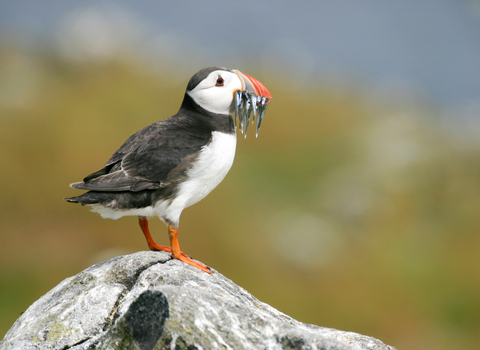
©Tom Marshall
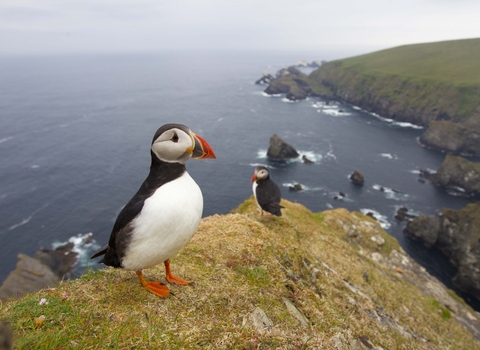
©Mark Hamblin/2020VISION
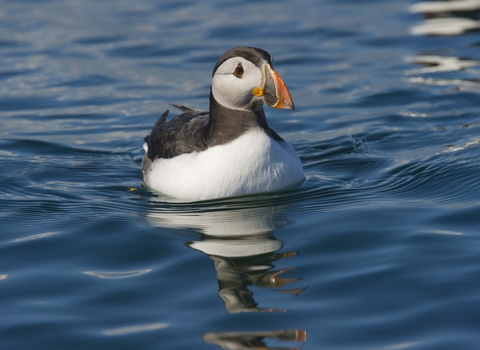
©Rob Jordan/2020VISION
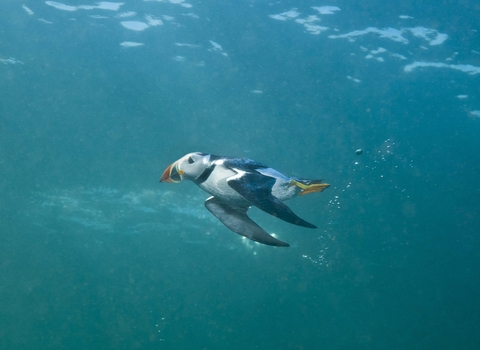
Puffin ©Alex Mustard/2020VISION
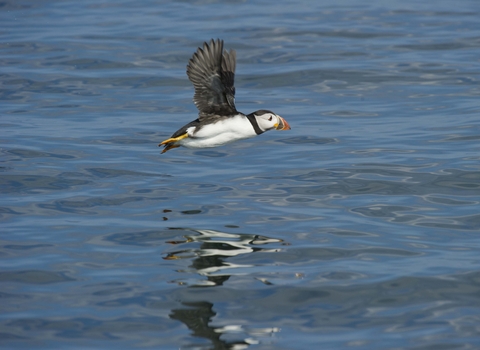
©Rob Jordan/2020VISION
Puffin
Scientific name
Fratercula arcticaWhen to see
March to AugustSpecies information
About
Sometimes referred to the ‘sea parrot’ the puffin is instantly recognisable from its brightly coloured parrot-like bill. Spending winter at sea, every year thousands of puffins return to the UK to nest in their little hobbit-like burrows in the ground. Puffins are loyal to one another, each year mating with the same bird and producing one chick. This one chick, known as a puffling, keeps its parents busy though fishing to keep it well-fed and satisfied. Their favourite meal is sand eel which they catch by diving and swimming using their wings.How to identify
The puffin is black above, with a white belly and cheeks, a large, multicoloured bill, and orange, webbed feet.Distribution
Nests on cliffs and islands at scattered locations around the coast of Scotland, northern England, South West England and Wales.In our area
The Isles of Scilly are home to breeding populations of thirteen species, including puffins, with around 20,000 birds in all. Puffins don't breed on Scilly in high numbers, but their comical beaks and black-and-white butler coats make them an icon of islands. The best time to enjoy our seabirds is the spring and summer, from April to July, when you'll see the biggest diversity. Fulmars hang on the wind off their cliffs, shags stand sentry on the rocks, puffins, guillemots and razorbills hang out on their islands, whilst flocks of gannets (which don’t breed on Scilly) feast on the small fish that are shoaling around the islands. Gulls swoop around the harbour and bays and shout out their noisy calls over Hugh Town.
Did you know?
The puffin is also known as the 'sea parrot' due to its brightly coloured bill, which is part of its breeding plumage. The bill is serrated to hold fish in place; one puffin was recorded as having 83 small sandeels in its bill at once!The Isles of Scilly are home to breeding populations of thirteen species, including puffins, with around 20,000 birds in all. Puffins don't breed on Scilly in high numbers, but their comical beaks and black-and-white butler coats make them an icon of islands. The best time to enjoy our seabirds is the spring and summer, from April to July, when you'll see the biggest diversity. Fulmars hang on the wind off their cliffs, shags stand sentry on the rocks, puffins, guillemots and razorbills hang out on their islands, whilst flocks of gannets (which don’t breed on Scilly) feast on the small fish that are shoaling around the islands. Gulls swoop around the harbour and bays and shout out their noisy calls over Hugh Town.
